This is my belated ‘quick look’ comparison between Ducati’s 2015 Multistrada 1200S DVT and its predecessor, the – and, specifically, ‘my’ – 2010 Multistrada 1200S. This was courtesy of Ducati Glasgow, who turned their pristine demonstrator over to me whilst my bike was in for replacement of a blown fork seal (that being a pretty standard issue with Öhlins forks).
And about time too…
…I’ve been trying to sort this out for nearly eighteen months, during which time the game has moved on, from being a comparison between the second generation Sachs Skyhook-suspended machine and the earlier Öhlins-equipped bike to being a face-off between my moderately customised Mk 1 Multistrada 1200S and the shiny and entirely new two-wheeled Audi production.
First impression then, as seen on a bit of a walkaround. This is definitely a more grown-up machine and more obviously divergent from Ducati’s minimalist race track heritage – there are few exposed fasteners; the plastic is swoopy and comprehensive rather than a simple skin over the rude mechanicals and the whole thing seems rather more of a piece than hitherto. The plastic itself is of better fit and finish. Which is just as well, as there is a lot of it. There’s good and bad there, the higher perceived quality being offset in my mind by its being a larger-looking (and feeling) bike.
Ergonomics
Second impression: Get on board and it still feels a big bugger. I’m not quite sure why, but the display is higher and the tank front and fairing occupy more of your field of view than perhaps hitherto. The seat was also set to the lower of its two positions, which made me feel sat more in rather than on the bike, which may have contributed to the feeling of size.
The controls fell readily to hand… hah! – I’ve been waiting decades to write that. Actually, some fell slightly too readily to hand: the main beam switch has changed from being a push down for main to push forward and very easy to catch with the index finger. I did a lot of lasering of innocent cars today. Overall though, the control layout and ergos seem to be a step forward from the older bike. The display is certainly very bright and clear and shows the various modes and options tolerably well.
But, but, butt…
The seat itself is much narrower at the front and, for the pilot, longer and more roomy. That combines with a notably narrower back to the tank to make the knee/bike relationship closer to sports bikes than a thigh-splayed adventure tourer. That in itself is no bad thing, but the narrowness of the front does lose some support under the thigh. I also found that the seat was trying to slide me forward and into the tank, something I think I’d rapidly find rather wearing.
Blair and I played around with the seat height adjustment when I got back and it does look as though the lower seat height does drop the seat more at the front than the back: I’m going to try the bike again with the seat set high and see what happens. But I think there’ll be an after market seat in my future if I go this way.
Head vs the World
Enough of the poking and prodding already, how about riding the damn thing? Which brings forth a disclaimer: quite a lot of this is less about the bike and more about what’s going on in my head. Our perception, expectation and familiarity play a huge part in how we assess something new. And here we’ve got two machines where your head creates an expectation of similarity and, when reality diverges, confusion ensues. And only time and practice will tell if that’s something that can be reconciled. Right now though, I’m still a little confused.
Climb aboard, work out where everything is on the new Colour TFT display and hit the button. Is it running? Yes, apparently so, but very, very quietly and smoothly – the characteristic v-twin loping idle has been much reduced, along with a touch of the Ducati distinctiveness. That’ll be the variable valve timing.
Pull away. Stall. Repeat. On this particular bike the clutch take-up is almost at the end of its travel. Weird. On the move though, the first impression is of quiet smoothness, and a lot of it. Almost too much so – in urban riding at low revs in any mode (I tried ‘em all), the throttle response feels slow, long of travel and slightly dead on the pickup, as if the machine is trying to insulate the rider from their own ham-fistedness – an unsubtle handful is needed for a rapid squirt through a gap. That’s not my cup of tea: I’d rather have something that gives me what I ask for, when I want it and with the consequences thereafter being down to me. I do find myself running a gear too low – you’d think that with a smoother engine, I’d automatically be riding in a higher gear: it’s that headology thing – I’m conditioned to associate a given speed with a certain level of noise & vibration, so I’m using a lower gear to match experience to expectation.
It’s a longish hack out of Glasgow to some proper roads, which gave me the chance to discover that the unfortunately-named DVT will happily trundle along at 40mph in 6th gear. In comparison, my 1200S, even with its lowered gearing, will go directly into the traditional V-twin lump’n’lurch if I run anything beyond fourth gear at that speed.
Open roads now, so enough of the eco-riding and time for some proper acceleration. Here, my built-in arsecelerometer is not a reliable guide – many things, not least noise, power delivery and vibration influence our perception of performance. My point of reference – the original 1200 – takes off from any revs and sails up to 6000rpm, takes a deep breath then legs it for the horizon. But there it’s a smooth transition – a natural opening up on the engine in its higher rev range. I like that.
The DVT however comes across as more schizoid: at lower revs, it’s very smooth and tractable for any motorcycle, let alone a v-twin, albeit with that slightly woolly throttle response, even in Sport mode. At about 7000rpm there’s then quite an abrupt change in character – in fact, the claimed extra 10bhp of the DVT seems to be concentrated at the top end, because it not only does a very fine impression of a Typhoon on afterburner, it even sounds like one as well, with a banshee howl toward the rev limiter. I can only assume that this is the point at which valve overlap reaches its maximum. The transition, although marked, is still fairly smooth and nothing like the crude mechanical switch that plagued the original VTEC VFR800 (incidentally ruining what had been one of the great motorcycle engines). But it does give the engine two distinct characters rather than just variations on a theme. What I can’t tell at this stage is whether the DVT is genuinely weaker in the low to mid-range or whether it’s just by comparison with its top-end performance.
But, but, but… …I remain to be convinced that this character suits me: I’d happily trade a little of that top-end for more alacrity of response at lower revs and greater linearity throughout the rev range, something that might be doable in software alone.
When the first 1200 Multistrada was launched, there was a deal of comment on the suddenness of the throttle response and subsequent firmware updates did seem to take things down a notch or two. I rather missed the feral immediacy of the early maps, even if we shouldn’t confuse immediacy with precision: for my money, no current Ducati matches the precision and delicacy of response of the 996-era bikes. So colour me ancient…
One side note: the new machine does appear to have a knock sensor, so should take a wider range of fuel qualities and may actually benefit from being fed super stuff.
Handling’n’stuff
Engine aside, the other defining characteristic of the Multistrada is its semi-active Sachs Skyhook suspension. And here again, I feel the same sort of split personality as I found from the engine. When blatting along a country road the bike feels soft, cushy and detached, so I’m naturally a tad tentative about slinging into the next bend. Even in sport mode, the DVT still feels that way. Of course, it’s selling me a technological dummy: turn in enthusiastically and the whole plot not only entirely fails to wallow like a drunk blancmange but simply and neutrally rocks around and spits me out the other side, the bike’s attitude sensors simply dialling up the damping to suit. After a few trials, I finally had the confidence to roll on the throttle after turn-in, then finding myself to be exiting the bend at some considerable pace and not necessarily with both wheels on the ground.
So, after that, it was a question of setting things up so that the feel suited me: without digging especially deeply into the override settings, I found that putting it into rider+luggage went at least part way to closing the gap between perception and delivery.
And, of feel, this is interesting: I’m a huge fan of Öhlins suspension – my own machine is running that with their own version of semi-active suspension: less ultimately sophisticated than Skyhook but with what appears to be a more sporting set of algorithms. What the Öhlins does manage though is consistency of feel: combining a supple ride with a massive amount of information about what’s going on twixt tyre and road. I didn’t feel that I was getting that with the Skyhook bike, which in turn made me feel both more detached from the action and more remote from the front-end. The bike overall comes across as less of an overgrown supermoto and more of the grand tourer, my confidence suffering as a result.
Of course, when you’re giving all this tech a good workout, at some point you’re going to have to slow down, so it’s time to examine the brakes. These were a tad surprising – the calipers look very like those on the Superbikes, which can nail the rider’s nose to the ground with a one-finger stroke of the brake lever, but these are in fact rather more progressive, requiring a more determined squeeze to deliver some very nicely judged braking and a probably more appropriate response for a long-travel tourer – not that much different from mine, in fact.
The rear brake was better than mine. Which is merely saying that anything is better than nothing. I’d still like more bite and power for low speed control.
The stock screen seems quieter and more buffet-free than the MRA X-Touring on my machine, which in turn is a significant improvement over the original stock screen. [Update: having now ridden the DVT more extensively over fast roads, the stock screen is actually much worse than mine and would absolutely need to be replaced.] Neither however quite approach the quality of airflow from a full-faired bike. Just sayin’…
Truly weak points of the original bike are the bloody awful headlights. The ’S’ model DVT has LEDs poking out of every orifice and will adjust its beam according to the lean angle but that of course doesn’t guarantee a damn thing. More feedback needed here.
Known Problems
It’s still early days, but a few (so far minor) issues have raised their heads with the Multistrada DVT
- the soft plastic on the display scratches easily
- frangible pannier mounts just break or jam.
- the trip odometer resets itself whenever the ignition switches off. Or when a black cat crosses its path.
Which doesn’t seem too bad, but after my recent experience with Ducati’s retrograde quality control, I wouldn’t now go near one for at least a year after launch.
In conclusion, m’Lud…
Both machines belong in a select class that I call Gentleman Hooligans – bikes that can behave in a calm and civilised manner until you scratch the surface to release their inner barbarian.
The original 1200 and the DVT however are of notably differing demeanours: The original 1200 would probably be thrown out of the Bullingdon Club for over-exuberant pie-hurling – if you poke it, it instantly leaps out of it’s seat, cries, “Yoiks! Tally-hoooo!!” and rockets off in pursuit of the uneatable.
The DVT by comparison is more Brideshead Revisited: it is capable of behaving at a vicarage tea party (unlike some of its near relatives) but, given a good prod, it will sigh, stretch, ease out of its wing chair, put in a four-minute mile without bothering to lace its shoes and then settle back down to its book, not a hair out of place, with merely an eyebrow raised in gentle admonition.
On this first ride though, the unreconstructed bun thrower in me feels uncomfortable with the extra spread of abilities with which Ducati has tried to endow the DVT: I think it’s left a few too many holes in the middle and, for now, my shortlist hasn’t changed either way: I need to do some headwork and try again.

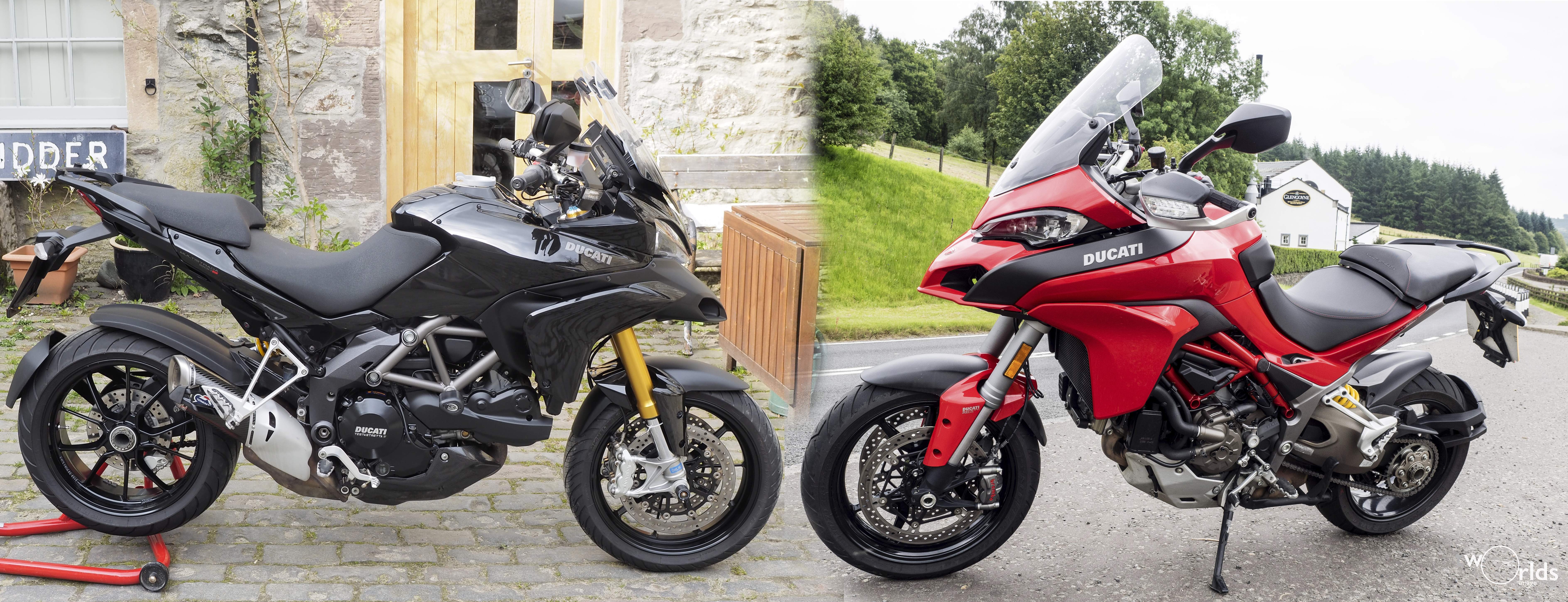
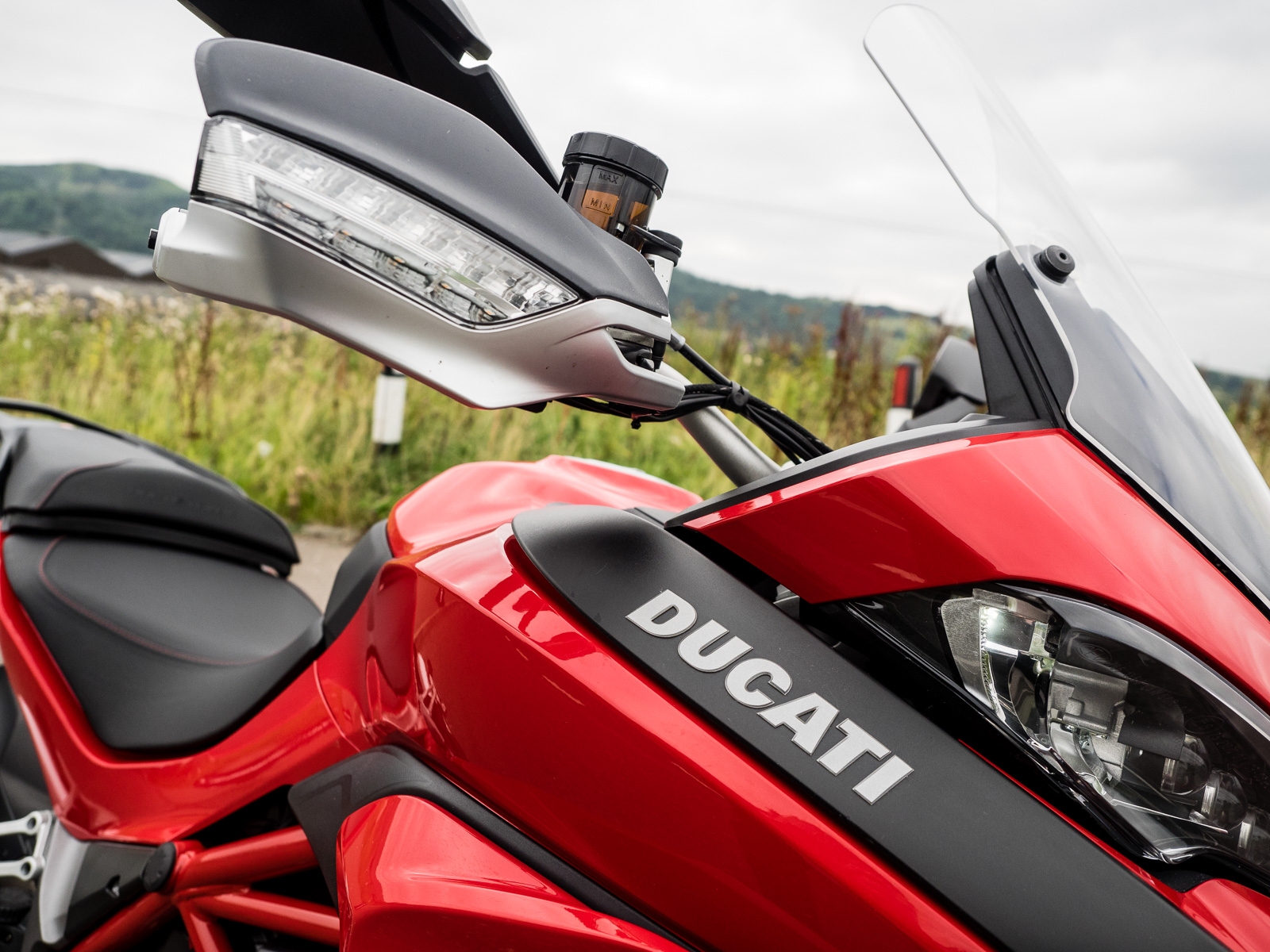
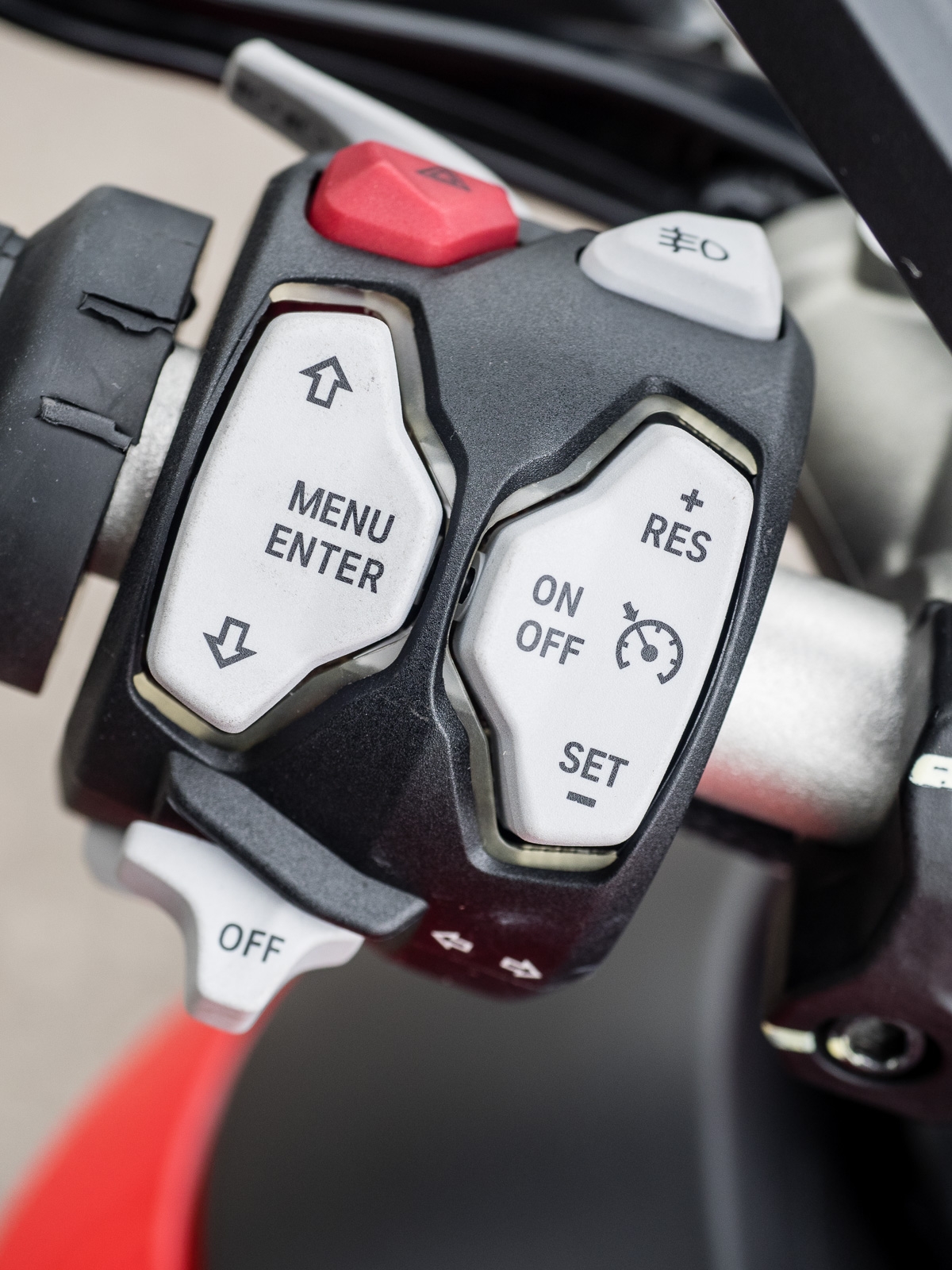
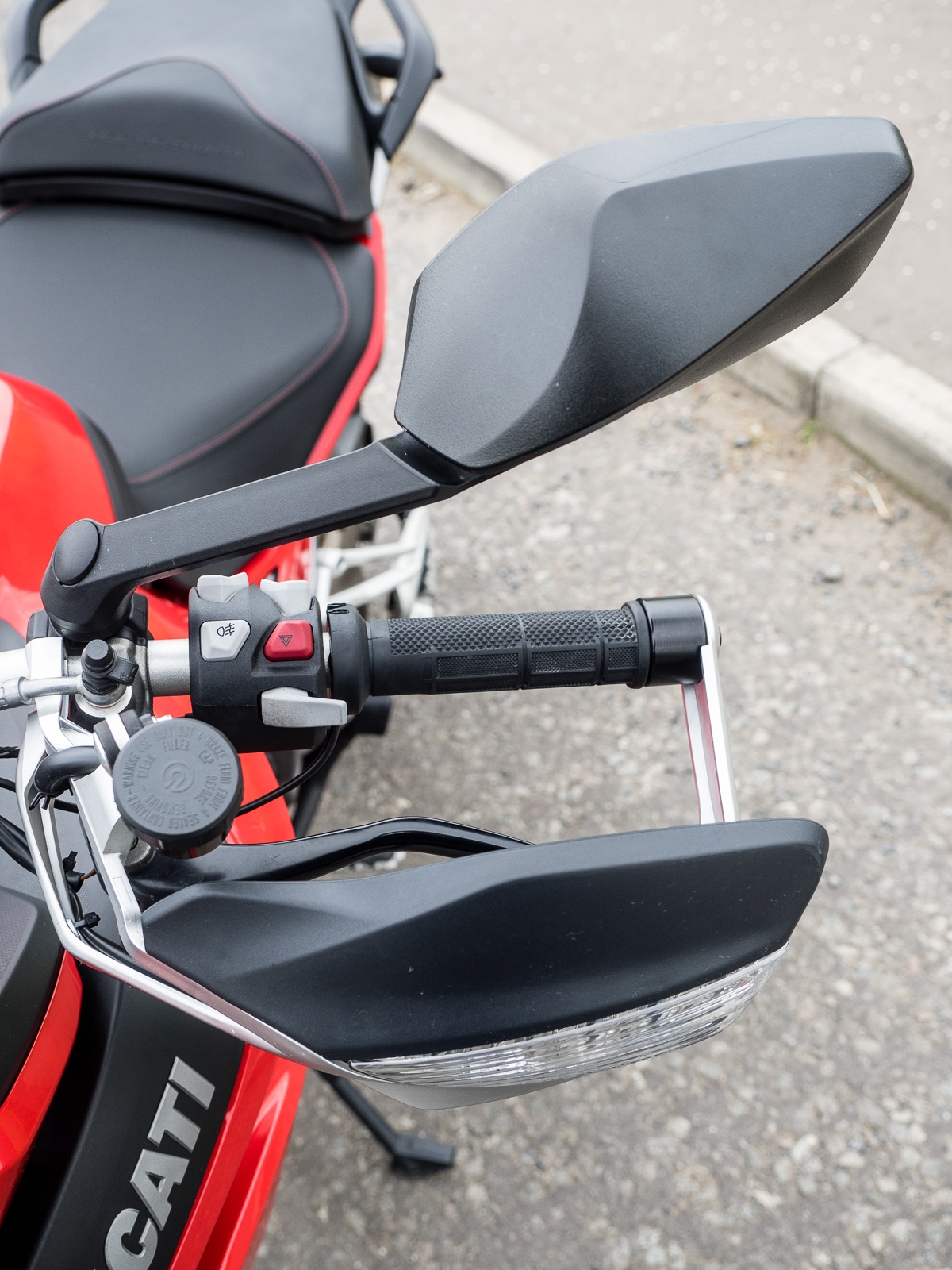
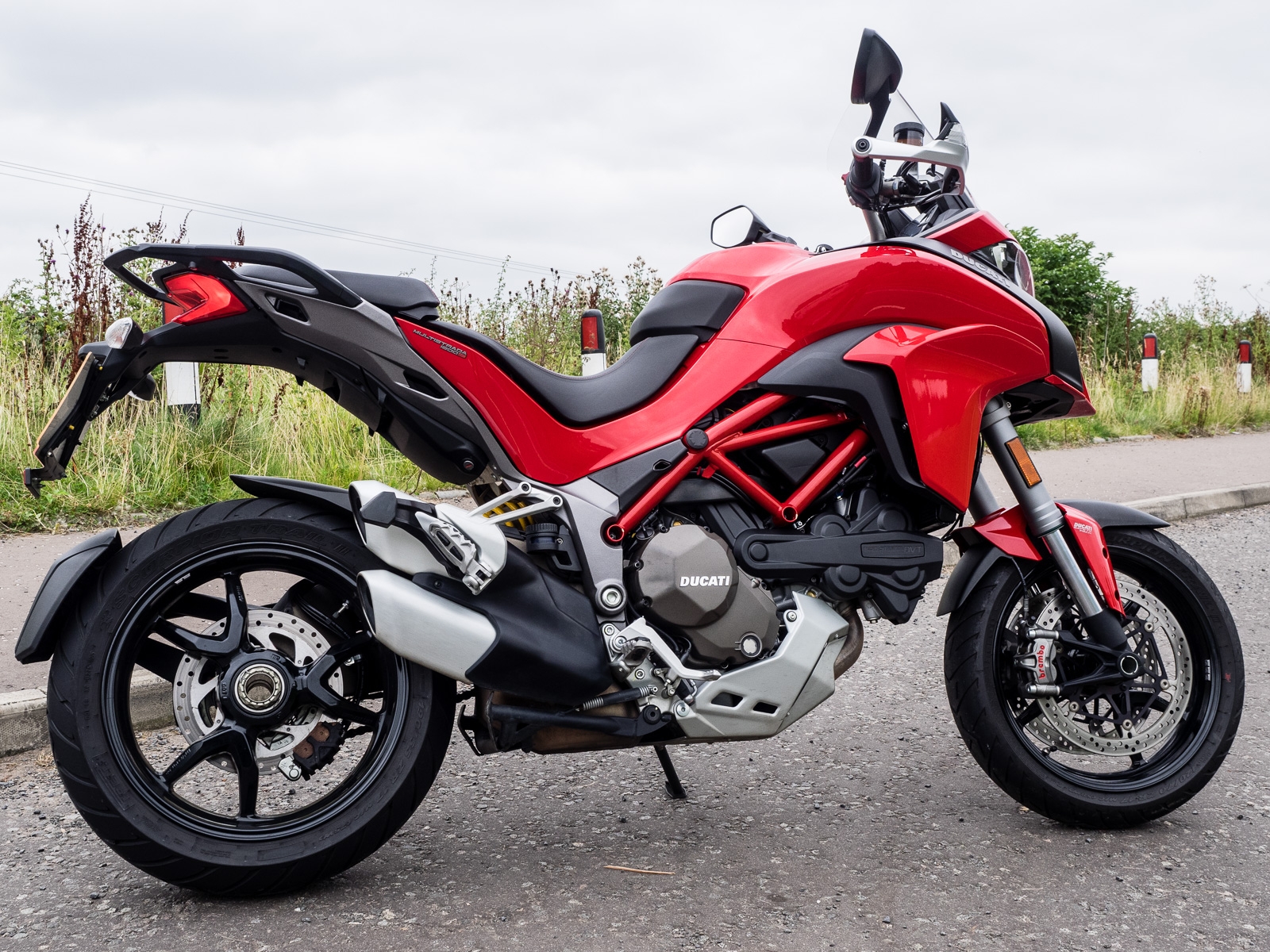
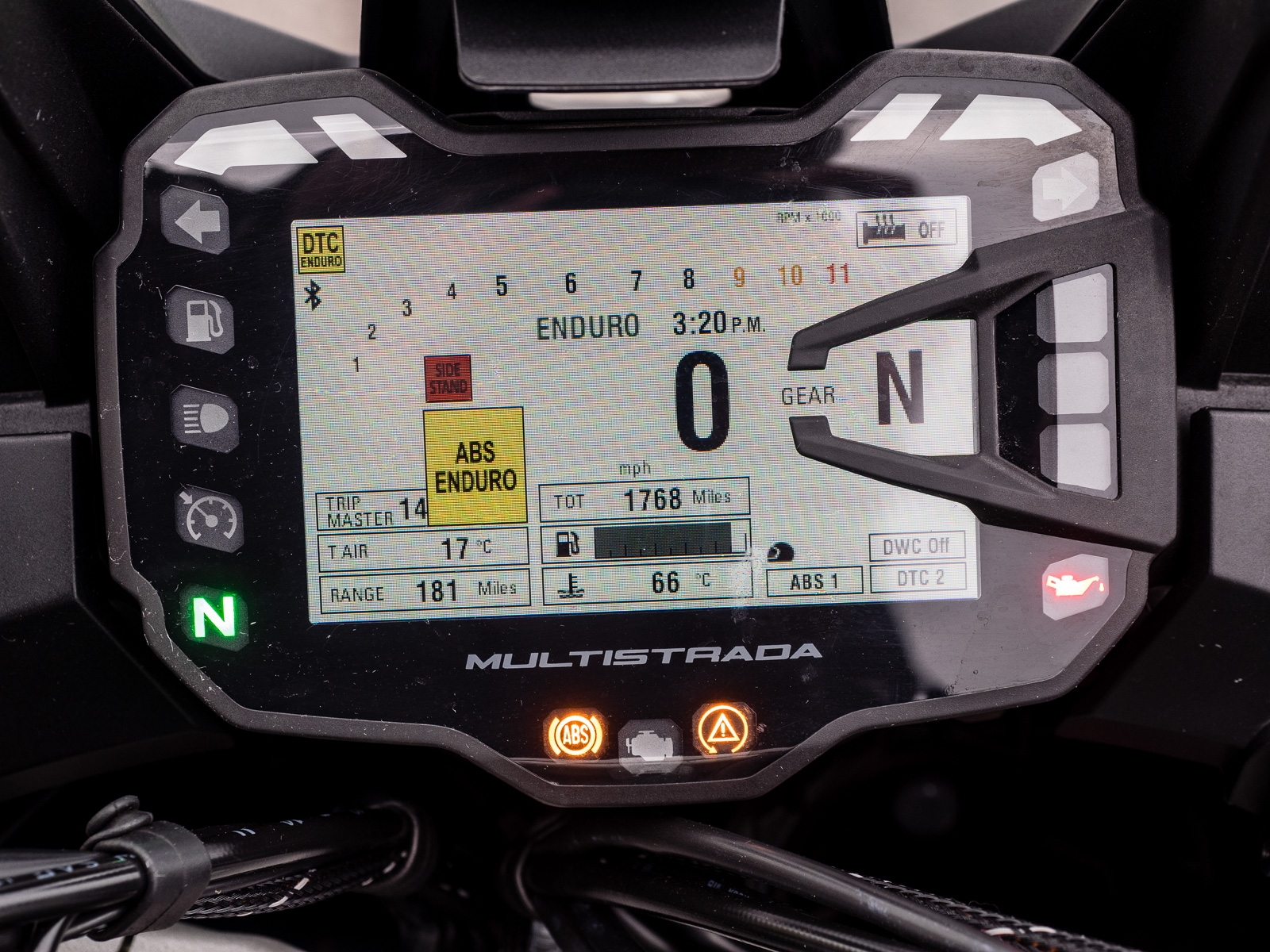
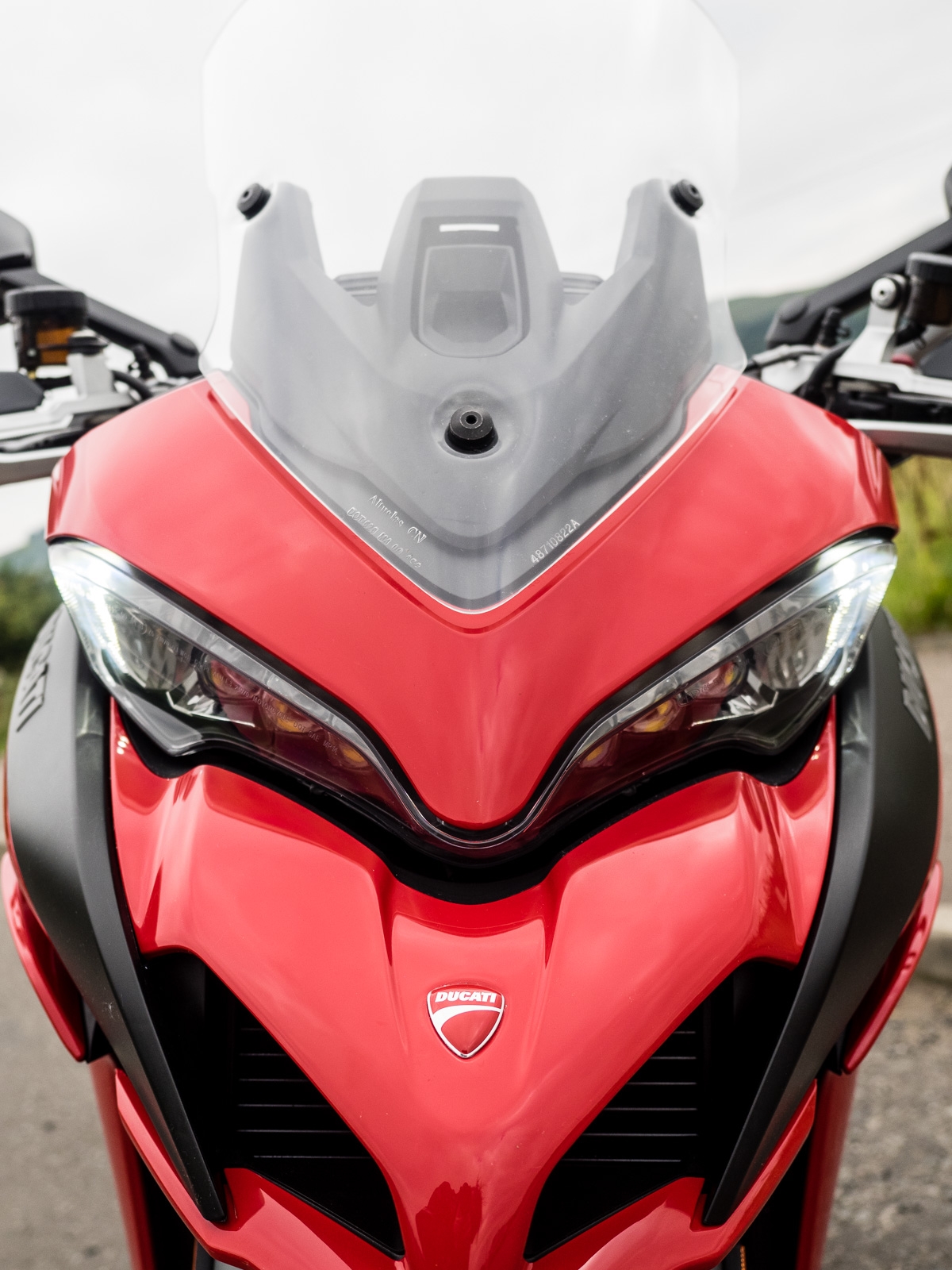
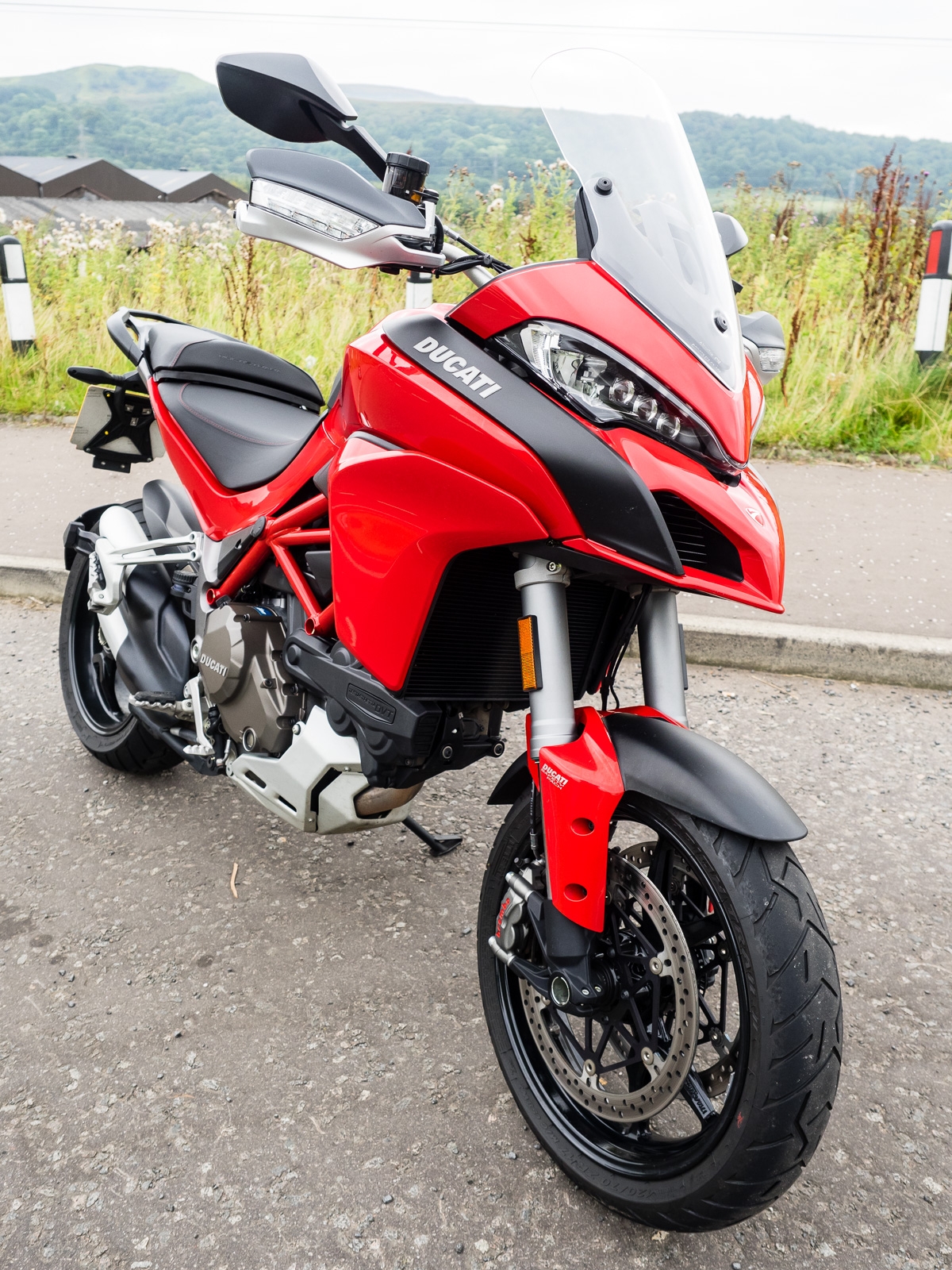
Nice write up Richard.
Your experience mirrors mine.
I too prefer the feel of the ohlins.
If I hadn’t replaced my bike last yearci would have definitely brought the new one.
Other guys in our club are reporting a few other funnies, like cylinder head issues, and clutch slave cylinders too.
The flip side, fuel economy is significantly improved. Not much of an issue for casual rides, but a big deal on trips.
There also a lot of other techie stuff for you to play with, like linking your bluetooth phone, headset, and sat nav to your bike. You can then download trip data, and fiddle with some of the settings, so I’m told.
I know I will buy one in a year or so. I think I will keep my current one too though ????
All the best.
John w.
The full termi and map completely changes this bike into what it should be. A balistic characterful missile
So I gather, although I haven’t had the chance to ride one do equipped. I just have a slight objection with having to cough up an extra couple of grand to make the bike behave as it ought to out of the box.